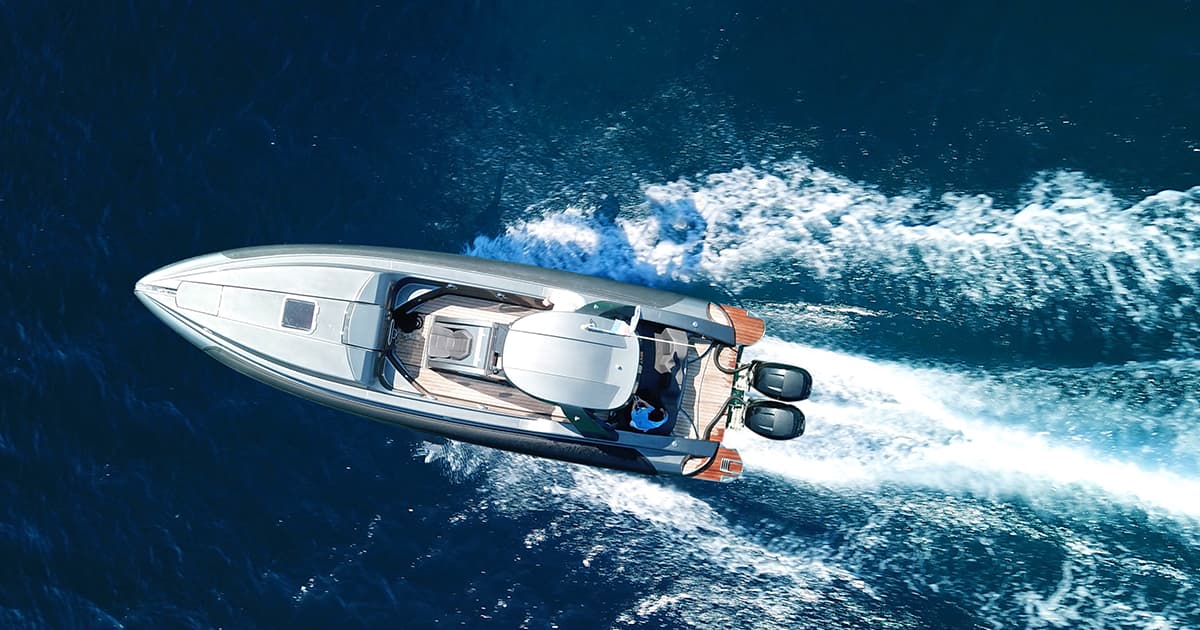How to Control Your Boat's Wake and Wash

The faster your boat goes, the bigger its wake and wash.
When you control your boat’s wake and wash, you will help minimize the danger to other boaters and swimmers and you will lessen the environmental impact.
What is wake?
A boat's wake is the trail of waves left behind as it moves through the water.
What is wash?
A boat’s wash is the churning of water that’s created by the boat’s propeller at the stern. It’s also called whirlpool or eddy.
Respect no-wake zones: Many waterways have designated no-wake zones to protect critical habitats and reduce the risk of erosion. Maintain a slow speed when passing through no-wake zones.
What are the adverse effects of not controlling your wake and wash?
When you don’t control your boat’s wake and wash, you can endanger swimmers.
Wakes can rock, swamp, or capsize other boats.
Wakes striking shorelines can cause rapid and severe erosion.
Wakes can destroy sensitive habitats and impact aquatic and plant life.
Did you know? Unlike natural waves, boat wake travels at the speed of the boat and wake frequencies are often high.
How can boat operators control their wake and wash?
Respect speed limits
When boating in Alberta, British Columbia, Manitoba, Ontario, Saskatchewan, and Nova Scotia, boat operators are to observe a speed limit of 10 km/h (6 mph) within 30 metres (100 ft ) from shore. This limit applies on all waters within these provinces except where other limits are posted.
Respecting speed limits helps reduce wake and the impact on marine life and their habitats and vegetation.
Did you know? Wakes can damage boats secured to docks. A large wake taken broadside causes a boat to severely rock even if it’s tightly tied to the dock. Wake taken on the stern or bow can pull mooring hardware from the boat, the dock, or both.
Use efficient an engine and propeller
Installing an efficient boat motor and propeller helps reduce the drag of your boat. Less drag means less wake and wash. Drag is the resistance caused by your boat as it moves through the water.
The lower the resistance, the less power is needed to propel your boat, which also saves energy and reduces greenhouse gas emissions.
The efficiency of a boat motor and propeller also depends on the shape and size of your boat. Consult a boating expert to help you select right engine and propeller for your boat.
Respect the environment and avoid sensitive habitats
When you avoid sensitive wildlife habitats, you help protect marine ecosystems and the species that live there.
Your boat’s wake and wash can disrupt local species’ behaviors and cause physical damage to ecosystems.
You can use a nautical chart to identify sensitive habitats and places where boating is prohibited. Navigation systems can also be equipped with mapping functions that let you know where there are sensitive wildlife habitats.
You can rely on marine buoys and markers.
Did you know? Big wakes are caused by boats cruising with the bow high and the stern deep.
Boat insurance isn’t legally required, but it’s a great way to protect your investment in your boat. It’s best to insure your boat all year round to protect it, even if you’re not using it over the winter.
Speak to a Western Financial Group boat insurance expert about your boating insurance needs.



